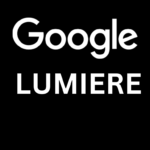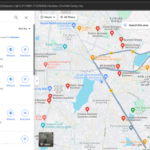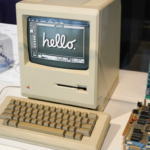Google Lumiere : Revolutionizing Video Creation Google Introduces Lumiere, a Cutting-Edge Multimodal AI Model In a groundbreaking move, Google has introduced Lumiere, a revolutionary multimodal AI model designed specifically for video generation. Positioned as a text-to-video diffusion model, Lumiere stands out for its ability to synthesize videos that exhibit realistic, diverse, and coherent motion, offering a significant leap forward in content creation tasks and video editing applications.
Google Lumiere Key Features of Lumiere:
- Space-Time u-Net (STUNet) Architecture:
- Google Lumiere a sophisticated Space-Time u-Net architecture, departing from traditional approaches. This unique design allows the model to process all frames in a video simultaneously, eliminating the need for generating keyframes and subsequent frame filling, a method common in existing video generators.
- Temporal Duration Generation:
- Unlike conventional methods, Google Lumiere generates the entire temporal duration of a video at once. This is achieved through a combination of spatial and temporal down- and up-sampling, where the model initially creates a full frame rate video in low resolution and then upscales it using a spatial super-resolution (SSR) model to produce the final high-resolution result.
- Versatile Applications:
- Google Lumiere finds application in various content creation scenarios, including image-to-video, video inpainting, and stylized video generation. Google emphasizes its role in enhancing video editing capabilities and content creation efficiency.
- Text-Based Image Editing Integration:
- Google Lumiere goes beyond traditional video generation by allowing users to apply text-based image editing methods. Notably, its Cinemagraphs feature empowers users to animate specific regions within an image, generating captivating videos with ease.
- Consistent Video Editing with Stylized Video Generation:
- Google Lumiere enables users to apply consistent video editing using text-based methods. For stylized video generation, the model can create videos in the desired style, utilizing a single reference image provided by the user.
Google Lumiere Advancing the Future of Video Content
Google Lumiere represents a significant leap forward in the realm of video generation, promising enhanced realism, diversity, and coherence in motion. The model’s innovative approach, coupled with its versatile applications, positions it as a game-changer in the field of AI-driven multimedia content creation.
Unveiling Lumiere: Redefining the Landscape of Video Synthesis
Google Lumiere emerges as a trailblazer in the realm of artificial intelligence, presenting a multimodal model that transcends conventional video generation methods. Designed with a focus on text-to-video diffusion, Lumiere sets itself apart by producing videos that not only mirror realism but also exhibit diverse and coherent motion, a feat that marks a significant stride forward in AI-powered content creation.
Revolutionary Architectural Approach:
At the heart of Lumiere’s capabilities lies its innovative Space-Time u-Net (STUNet) architecture. Departing from traditional practices, this architecture revolutionizes the video generation process. Instead of generating keyframes and filling missing frames through temporal super-resolution (TSR) models, Lumiere processes all frames in a video simultaneously. This unique approach enhances efficiency, realism, and the overall quality of the generated content.
Temporal Duration Generation and Super-Resolution Mastery:
Google Lumiere prowess extends to its handling of the temporal duration of videos. By employing spatial and temporal down- and up-sampling, the model crafts a full frame rate video in low resolution, subsequently upscaling it to a remarkable 1024×1024 resolution using a spatial super-resolution (SSR) model. This dual-sampling technique contributes to the generation of videos that are not only realistic but also visually stunning.
Versatile Applications:
The applications of Lumiere span a spectrum of content creation scenarios. From image-to-video transformations and video inpainting to stylized video generation, the model proves its versatility. Google emphasizes the integral role Lumiere plays in elevating video editing applications and streamlining content creation workflows.
Text-Based Image Editing Integration:
Lumiere transcends traditional video generation by integrating text-based image editing methods seamlessly. Its Cinemagraphs feature empowers users to animate specific regions within an image, opening up new avenues for creative expression and dynamic video creation.
Consistent Video Editing and Stylized Video Generation:
Lumiere not only excels in generating videos but also allows users to apply text-based methods for consistent video editing. For stylized video generation, the model can effortlessly create videos in a specified style, using a single reference image provided by the user.
Shaping the Future of Multimedia Content Creation:
As Lumiere steps onto the stage, it reshapes the landscape of video synthesis and content creation. Google’s commitment to advancing AI technology is evident in Lumiere’s capabilities, promising a future where multimedia content is not just generated but crafted with a level of realism and creativity that was once beyond reach.
Embark on the journey of AI-driven innovation with Lumiere, where the boundaries of video synthesis are redefined, and the possibilities for multimedia content creation are endless.
ALSO READ: Strategic Digital Marketing: Elevate Your Presence And Dominate The Online Landscape







